Rifle battle cruisers. "Derflinger" against "Tiger"? H. 3
Theoretically, 635-kg “Tiger” shells could pierce 300 mm of Derflinger’s armored belt with 62 cables, and the top 270 mm, probably of cables with 70 or slightly, of course, provided they hit the armored plate at an angle close to 90 degrees. Thus, it can be stated that at the main combat distances (70-75 KBT), the vertical defense of the Derflinger perfectly protected against the “theoretical” (high-quality) armor-piercing shells of the 343-mm guns of the British battlecruiser.
But not a single armor belt ... As we said earlier, the reservation scheme for the German Seidlitz cruisers inclusive had one major drawback - the horizontal part of the armored deck was located higher than the upper edge of the thick armor part. For example, in the same “Seydlitz”, the upper edge of the 300 mm armor belt was (at normal displacement) at a height of 1,4 m above the waterline, and the horizontal part of the armored deck was at the height of 1,6 m. Accordingly, the German battlecruiser had a whole “window” in which enemy shells only had to penetrate the upper, 230 mm armor belt, which was not a significant barrier to the armor piercing 343 mm shells, to hit the horizontal part or bevel of the armored deck. And the Zeidlitsa armored decks (including bevels) had a total thickness of 30 mm ...
So, on the “Derflinger” type cruisers, this “window” “slammed” because the upper edge of the 300 mm belt was not on the 20 cm below, but on the 20 cm above the level of the horizontal armored deck. Of course, given the fact that the shells hit the ship at an angle to the horizon, there was still a section on top of 300 mm armor, which could hit the armor-formwork, but now it was not 230 mm that defended it, but 270 mm armor, pierced which even the 343-mm "armor" was not so easy. And given that the “Derflinger” bevels defended not 30 mm, but 50 mm armor, the chances that the armor shell of the projectile pierced through the 270-300 mm passing through 30 mm did not break too much. Of course, XNUMX mm horizontal armor looked very modest protection and could not withstand the rupture of the projectile on the plate, but from the fragments (besides, flying almost not parallel to the deck) protected quite well.
In other words, in theory, the Derflinger’s defense could have been overcome by an 343-mm projectile. During the breakdown of 270 mm of armor and the break behind it 50 mm, the bevel could be pierced - tests conducted in Russia (1922 g) showed that from 305-356-mm projectile shells that exploded not on the armor, but at a distance of one and a half meters guaranteed protects only 75 mm armor. But this could happen only if the projectile “passed through” 270 mm armor plate as a whole and exploded near the bevel or directly on it, but if the projectile exploded in the process of overcoming the 270 mm armor plate, then it is highly doubtful.
As for the reservation of artillery, the forehead of the towers of the main caliber of “Derflinger” (270 mm) and barbety (260 mm) British thirteen half-inch 635-kg projectile at 70-75 kbt distances, if it could overpower, close to 90 hail. Which, of course, was complicated by the barbet form (it is very difficult to get into armor having the shape of a circle at an angle of 90 degrees).
So, it turns out that even for some “ideal” armor-piercing projectile of 343 mm caliber, the reservation of the Derflinger hull, if it was permeable at distances of 70-75 cables, is only at the limit of the possible. But the fact is that Royal has such shells fleet in World War I there wasn’t, and in fact the greatest thickness that the British shells managed to cope with was 260 mm - and then, it was not a 343 mm but 381 mm shell pierced it. Accordingly, if we proceed not from the table values, but from the actual quality of the English ammunition, the reservation of the Derflinger for the battle cruisers of the Lyon and Tiger types was invulnerable.
This, of course, did not mean that the “Derflinger” could not be sunk by 305-343 mm guns. In the end, the fatal injuries that ultimately led to the death of the same type of “Derflinger” “Lutzow”, inflicted 305-mm projectiles of the battle cruisers “Invincible” and (possibly) “Inflexible” of Rear Admiral Horace Hud.
But, without a doubt, the unprecedented level of body armor (for ships of the class “battle cruiser”) provided the Derflinger with a great advantage.
At the same time, it finally eliminated the main weakness of the German battlecruisers — insufficient armor penetration and the armor-inflicted 280-mm projectiles. The new twelve-inch projectile weighed 405 kg - almost a quarter more than 280-mm. The data in the sources on the initial speed of 280-mm and 305-mm German guns are somewhat contradictory, but in the worst case, the drop in initial speed compared to 280-mm is only 22 m / s, which together gives a significantly greater 305-mm armor penetration ammunition. Only 229 mm British armor provided more or less acceptable protection against them. Of the nine German 305-mm shells that hit the 229 mm armored plates of the belt and towers of British ships, four armor was pierced, but one of these four, although not completely destroyed, but lost both the head and the fuse, and, accordingly, did not explode . Thus, 229 mm armor plates managed to “filter” two-thirds of the German 305-mm projectiles, and this is still something.
As you know, the "Tiger" 229 mm armor got boiler rooms and engine rooms, as well as towers and barbety to the level of the upper deck. But it should be understood that even in theory, the booking of these parts of the British cruiser did not provide that level of protection against 305-mm German shells, which was the type of Derflinger-type cruisers against 343-mm. But in practice, in a real battle, a third of the German shells overcame the 229 mm protection of the British battlecruisers, while the 270-300 mm “Derflinger” armor remained for the 343-mm projectiles invulnerable.
Again, it should be emphasized: the invulnerability of booking does not mean the invulnerability of the ship. Derflinger and his sisterships could have been destroyed with 343-mm cannons, but this was certainly much more difficult than sinking a Lion or Tiger-type battlecruiser with 305-mm German artillery.
If even the 229 mm Tiger armor plates did not provide him with a level of protection comparable to that of the German battleship, then what can we say about the 127 mm belt and 76 mm barbetas covering the flow tubes of the newest British battle cruiser?
I must say that, significantly losing in the vertical booking, "Tiger", in general, did not have any advantages, which allowed him to at least partially compensate for this disadvantage. Horizontal booking "Derflinger" and "Tiger" was about equivalent. In terms of speed, “Tiger” only slightly exceeded its German opponent - 28-29 knots against, approximately, 27-28 knots. The location of the towers of the main caliber of both ships is linearly sublime. As we have said, the British in the “Tiger” project paid great attention to mine artillery - but if its caliber and protection (152 mm and 152 mm) now corresponded to German (150 mm, respectively), the unsuccessful arrangement of artillery cellars, resulting in the need the organization of special horizontal corridors for transporting projectiles and charges to the guns, spoiled the matter. We have to admit that in terms of medium artillery, "Tiger" was also inferior to "Derflinger".
In general, we can state the following. The first generation of British battlecruisers armed with 305-mm guns turned out to be completely uncompetitive for the German Fon der Tannu and Moltke. However, the English ships of the type "Lion" at the expense of the most powerful 343-mm guns and a slight increase in body armor surpassed the "Geben" and "Seidlitz." The construction of the Derflinger restored the status quo that existed before the appearance of the 343-millimeter British battle cruisers, since the newest German ship was significantly superior to both the Lyon and Queen Mary in terms of offensive and defensive qualities. If the British in the “Tiger” project were concerned, first of all, by increasing its protection, providing the citadel along its entire length, including areas of the main caliber towers with at least 229 mm armor and strengthening the bevels from 25,4 mm to at least 50 mm, then “Tiger” is beyond any doubt, although it would not have surpassed Derflinger, it was possible to talk about some kind of project comparability. So, "Seidlits", no doubt, was inferior to "Queen Mary", but still a fight with him presented a serious danger for the British battlecruiser. "Queen Mary" was stronger, but not absolutely - but in the case of a duel between "Tiger" and "Derflinger" the latter had an overwhelming advantage.
At this point, it was possible to finish the comparison between “Tiger” and “Derflinger”, if not for one “but”. The fact is that just in 1912, when the Germans began building the magnificent Derflinger, the British laid the first battleship of the Queen Elizabeth series - the difference in the timing of the bookmark was less than 7 months. Let's look at what kind of ship it was.
As is known, the British built four battleships like the Iron Duke and the battle cruiser Tiger according to the 1911 r program. According to the program of the next, 1912, it was supposed to build three more “343-mm” super-mid-range and a battle cruiser, the projects of which, in general, were almost ready (the battle cruiser, by the way, was to become the second Tiger ship). But ... as Winston Churchill wrote: "The British fleet always travels first class." The fact is that England had already laid down the 10 battleships and the 4 battlecruisers with 343-mm guns, and other countries responded. Japan ordered the British with a battle cruiser with 356-mm cannons, which were slightly more powerful than the British 13,5-inch. It became known that the new American dreadnoughts also received 356-mm artillery. According to information received from Germany, Krupp was experimenting with might and main with various models of 350-mm cannons, and it is them who will have to get the latest dreadnoughts like "Koenig." Accordingly, the time has come for a new breakthrough. Consider what happened to the British.
Artillery
History Winston Churchill, with the full support and endorsement of John Fisher, "pushed through" the tab of the 381-mm dreadnoughts, on which guns did not exist yet, is well known. Without a doubt, if the efforts of the British gunsmiths were not crowned with success and 381-mm did not work, the Admiralty would firmly put itself into a puddle, building ships that could not be armed. However, Churchill took a chance and won - the British 15-inch gun was a real masterpiece of artillery. External ballistics of the latest artillery system was beyond praise. And the firepower ... The 381-mm / 42 artillery system sent an 871 kg projectile with an initial speed of 752 m / s. Two-gun turrets, built with the experience of operating similar turrets with 343-mm guns, have become the benchmark for reliability. The maximum elevation angle was 20 degrees - while the firing range was 22 420 m or 121 cables - more than enough for the era of the First World War.
16 152-mm guns MK-XII with a barrel length 45 caliber - the only reproach to which could be only their low placement, which made the casemate flooded with water, but this was the norm for the battleships of that time. Unfortunately, the British did not think out again how to design the supply of ammunition to the dungeon, which is why 152-mm projectiles and charges were supplied rather slowly, which forced to store a significant amount of ammunition directly from the guns in the dungeon. The result is known - two German projectiles that simultaneously pierced the Malaya’s 152 mm armor, ignited charges, a fire (cord burned), and the flame rose above the masts. All this completely brought the casemate out of order and led to the death of several dozen people. The British themselves considered the placement of medium artillery as the most unfortunate element of the Queen Elizabeth project.
Reservation
If the main caliber of Queen Elizabeth type battleships deserves the most excellent epithets, then the protection of this type of dreadnoughts is quite ambiguous. In addition, its descriptions, alas, are internally contradictory, therefore the author of this article cannot guarantee the accuracy of the data presented below.
The Queen Elizabeth vertical armor protection was based on 4,404 m high armor. From the top edge throughout 1,21 m its thickness was 152 mm, the next 2,28 m had 330 mm thickness, and on the “end” 0,914 m up to the bottom edge armor thickness was 203 mm At the same time, in the normal displacement of the armored belt at 1,85 m was below the waterline. This meant that the most massive, 330 mm part was located on 0,936 m under water and 1,344 m - above sea level.
Bronepoyas stretched from about the middle of the barbet of the first main-caliber tower to the middle of the fourth barbet. Then, the armor belt got thinner in the bow and stern first to 152 mm, and then to 102 mm, ending with a little before reaching the stem and stern stem. However, one should not think that there was a “gate” to the “Queen Elizabeth” in the cellar of the bow and stern towers. The fact is that, in addition to booking the board, they were protected by traverses going at an angle from the main armor belt and closing on the barbet. Thus, the protection of the supply pipes of these towers consisted of two layers of 152 mm armor plates, one of which was at an angle to the diametral plane - such protection could only be dreamed of by Lion and Tiger. In addition to the 152 mm corner traverse, Queen Elizabeth also had 102 mm traverses in the bow and stern, where sections of the armored belt 102 mm were completed. Mention should also be made of the 51 mm anti-torpedo bulkhead, which also served as an additional protection for artillery cellars.
On top of the main armored belt, the Queen Elizabeth had a second, upper armored belt 152 mm thick, extending to the level of the upper deck. The casemate also had 152 mm protection with 102-152 mm by traversing the stern. In the nose, 152-mm armor plates "converged" to the barbet of the second main-caliber tower. The 381-mm cannon turrets had 330 mm frontal armored plates and 229 mm (possibly still 280 mm) side walls, 108 mm - the roof. The barbets defended 254 mm with armor in some places to the level of the upper deck (where the barbet was overlapped by a neighboring barbet or superstructure), thinning consistently to 229 mm and 178 mm, and lower, opposite 152 mm of the armor belt, 152 mm and 102 mm armor. The nasal cabin was defended (according to various data) by armor of variable thickness 226-254 mm (or 280 mm) aft - 152 mm.
As for the horizontal armor protection, then it is all very difficult. On the one hand, on the basis of the available drawings, we can conclude that horizontal armoring within the citadel was provided by an 25 mm armored deck with bevels of the same thickness. Outside the citadel, the armored deck had 63,5-76 mm in the stern and 25-32 mm in the nose. In addition, within the citadel, the upper deck had a variable thickness in different areas of 32-38-44-51 mm. The casemate additionally had a 25 mm roof. But if this description is correct, then we conclude that the horizontal protection of Queen Elizabeth roughly corresponds to that of Iron Duke battleships. At the same time, some sources (A. A. Mikhailov, “Queen Elizabeth-type battleships”) indicate that on the 381-mm superdreads the horizontal protection was weakened relative to the previous series battleships.
In general, the following can be said about the protection of Queen Elizabeth type ships. It is very good (although not completely so that, as we will see below), it protected the battleships of this series from projectiles of 305-mm guns. But a number of its elements (upper armor belt, barbettes, etc.) did not represent a serious defense against more powerful 356-mm, and even more so, 381-mm projectiles. In this regard, the British again created a ship, very unimportantly protected from the guns of the caliber that he carried himself.
Power plant
Initially, the British designed the super-midrange with 10 381-mm guns, located in the same way as was done on the “343-mm” super-midnights, while their speed should have been the classic for British ships 21 node. But the extraordinary power of 381-mm artillery led to the fact that even with eight main-caliber trunks the newest battleship was significantly superior to any ten-battleship with 343-mm guns. On the other hand, the space and mass of the “saved” tower could be used to increase the power of the undercarriage and achieve a speed much higher than the 21 node.
Here it is necessary to make a small "lyrical" retreat. According to O. Parks, the battle cruiser "Queen Mary", laid down in 1911 g, cost the English taxpayers in 2 078 491 f. Art. (unfortunately, it was not specified whether this tool cost). At the same time, the King George V series of dreadnoughts, laid in the same 1911 g, along with guns, cost the British treasury an average of 1 960 000 f.st. for the ship. The Iron Dukes following them were even cheaper - 1 890 000 f.st. (although it is possible that the price is indicated without weapons).
At the same time, "Tiger" turned out to be even more expensive than "Queen Mary" - O. Parks quotes a fantastic amount of 2 593 100 f. with guns. According to other sources, "Tiger" was worth only 2 100 000 f. Art. (but perhaps without guns). In any case, it can be stated that the battlecruisers cost the British more than the battleships at the same time. And, in spite of the hurricane energy of John Fisher, who saw the main ships of the fleet in battlecruisers, the British more and more often wondered if they needed super-expensive, but weakly protected ships, which are extremely dangerous to use in a general battle, even not in line, but as a fleet avant-garde fleet?
As you know, D. Fisher left the post of First Sea Lord in January 1910. And the new First Sea Lord Francis Bringjemen finally voiced what many have been thinking about for quite a long time:
Incidentally, oddly enough, but the Queen Elizabeth did not become super-expensive ships at all - their average cost with weapons was the 1 960 000 f.st., that is, cheaper than the battle cruisers.
A similar approach met with the full approval of the sailors, with the result that the design of the battleship was redesigned at much higher speeds than previously thought. The power rating of the Queen Elizabeth power plant should have been 56 000 hp, in which the newest dreadnoughts with a normal 29 200 t displacement should have developed the 23 node, and when forcing to 75 000, hp - 25 nodes. In reality, their speed may have been somewhat lower (although Malaya developed 25 knots. On tests), but it was still very high, fluctuating within 24,5-24,9 knots.
Of course, such results could not be achieved with the use of coal, so the queen-type battleships of the Queen Elizabeth became the first British heavy ships to completely switch to oil heating. The reserve of oil was 650 t (normal) and 3 400 t full, in addition, the full load included the presence of 100 t coal. According to some reports, the range was 5 000 miles on 12,5 nodes.
In general, the project turned out not just successful, but revolutionary in the creation of battleships. The ships built on the principle of “only big guns” were much stronger than squadron battleships, and were named after the first battleship of this type dreadnoughts. The introduction of 343-mm guns on battleships opened the epoch of super dreadnoughts, but if so, then Queen Elizabeth type ships could rightfully be called “supersuperdrednoutes” - their advantage over ships with 343-356-mm artillery was big enough for that.
But the main reason for which we devoted so much time to the construction of these in every respect advanced ships, is that they had to form the “high-speed wing” necessary for reconnaissance and coverage of the head of the enemy’s column in a general battle. That is, the Queen Elizabeth-type battleships were supposed to perform exactly the functions that the battlecruisers in Germany created during the Grand Fleet. And if so, then the Derflinger-type battlecruisers would have to face in battle no longer with the British battle-cruisers, or rather, not only with them. Before the "Derflingerov" loomed the prospect of a battle with the squadron "Queen Elizabeth", and this was a completely different opponent.
The armor penetration data of the 305-mm guns of the Germanic battlecruisers is somewhat different, but even the most modest of them, given in "Jutland: An Analysis of the Fighting" (254 mm on 69 kbt and 229 mm on 81 kbt) against the background of actual results demonstrated in the jutland battle, look somewhat optimistic. But even taking them for granted, we see that neither the main-caliber artillery, both the towers and the barbets, nor the waterline covered with 330 mm for the armor-belt, is generally invulnerable to the German shells for 75 with great luck, fragments of armor and projectile will pass after the last one explodes in the process of armor penetration). In essence, only German 305-mm projectiles piercing 152 mm armor belts and exploding inside the ship are of some danger - in this case their fragments will have enough kinetic energy to break through the 25 mm armor deck and damage the engine and boiler rooms. The Germans 305-mm projectiles have practically no chances to pass through the barbets as a whole, but they have a good chance of hitting the barbet's armor and penetrating it with the cumulative impact energy and projectile explosion. In this case, red-hot fragments will fall into the feed pipes, which may well cause a fire, as happened in the Zeidlitz stern towers. A considerable danger was also represented by the shells that fell into the dungeon of the British battleship (recall the fire at Malaya!)
In other words, the ship's armored protection type "Queen Elizabeth" was not invulnerable to 305-mm guns - some "windows", if hit with which 405-kg German "armor" could do things, these battleships had. The problem was that even the thickest armor of the “Derflinger” - the 300 mm section of the armor belt — was penetrated (calculatedly) by an 381-mm projectile at a distance of 75 KBT. In other words, the Derflinger reservation, which very well defended the ship against 343-mm artillery fire, did not at all hold on the 15-inch armor-piercing shells. Much to the happiness of the Germans, the quality of such shells in the battle of Jutland was very low among the British, one could speak of them rather as a semi-slaughter. There is no doubt that if British sailors were at the disposal of the armor-piercing shells created later under the Greenboy program, the line cruisers of Admiral Hipper’s 1 reconnaissance group would have suffered much more serious losses. However, even the existing shells caused very heavy damage to German ships.
Without a doubt, the magnificent defense of the German battlecruisers allowed them to hold out for some time under the fire of 381-mm guns, and their artillery could cause some damage to the “Elizabeth” type battleships. But on the whole, on the basis of their tactical and technical characteristics, the Derflinger-class battlecruisers, of course, were not equivalent and could not withstand high-speed British battleships. And this leads us to an amazing dualism in assessing the latest German battlecruisers built.
Without a doubt, the “Derflingers” were magnificent ships that the British themselves recognized. O. Parks writes about the series head cruiser:
There is no doubt that Derflinger left far behind both the Seidlits that preceded it and the entire line of British battlecruisers, including Queen Mary and Tiger, in its qualities. Thus, the "Derflinger" uniquely belong to the laurels of the best pre-war battlecruiser of the world, and the best of the German battlecruisers.
But at the same time, the Derflinger is also the worst German battleship, and the reason for this is very simple. Absolutely all German battlecruisers were built as a “high-speed wing” with the line forces of hoheeflotte. And absolutely all the battlecruisers of Germany, starting from the “Von der Tanna” and “Seidlits”, inclusive, were able to fulfill this role more or less successfully. And only the ships “Derflinger” were no longer suitable for this, since the British could not resist the “high-speed wing” of the British, made up of battleships of the type “Queen Elizabeth”.
Without a doubt, this conclusion may seem to someone "far-fetched." But you need to understand that any warship is not built to surpass any other ships in one or several characteristics, but in order to perform its inherent function. The German admirals required ships capable of acting as a “fast wing” under the main forces of the open sea fleet. They built them, and later the world classification brought them to the list of battle cruisers. “Derflingers” became the best battlecruisers in the world ... just at the time when the British assigned the functions of a “high-speed wing” to high-speed battleships - a new class of ships that the battlecruisers could not withstand. Thus, Hohzeeflotte was deprived of the instrument he needed, and that was the only thing that mattered in a naval battle.
Alas, we are compelled to state that in 1912 r the British naval thought put the checkmate and checkmate to the high-speed heavy ships of the German fleet - having implemented the concept of the high-speed battleship, the British were far ahead.
Продолжение следует ...
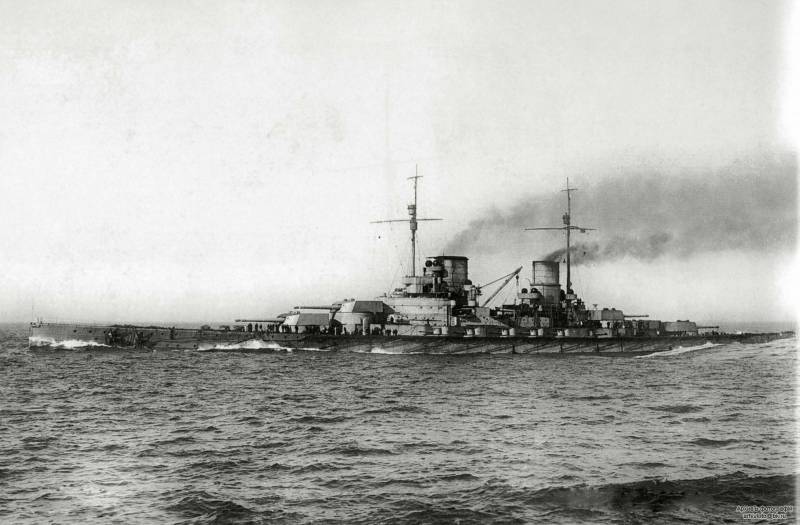
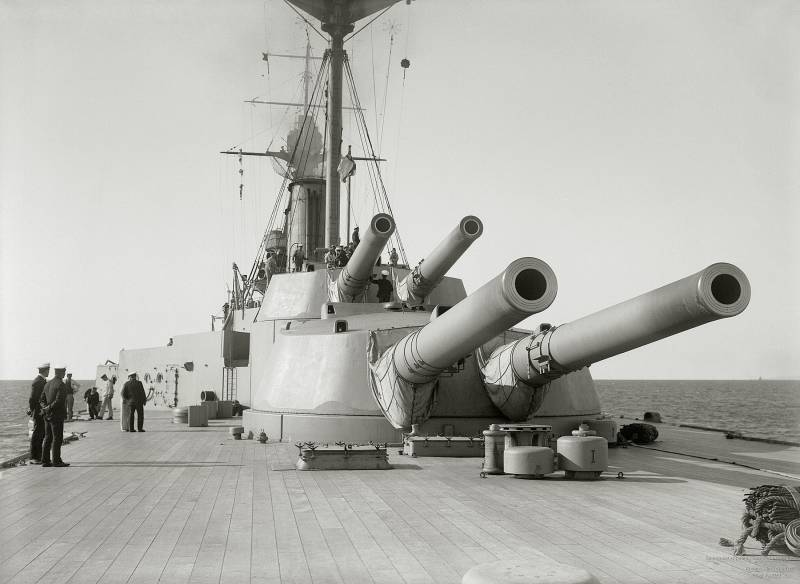
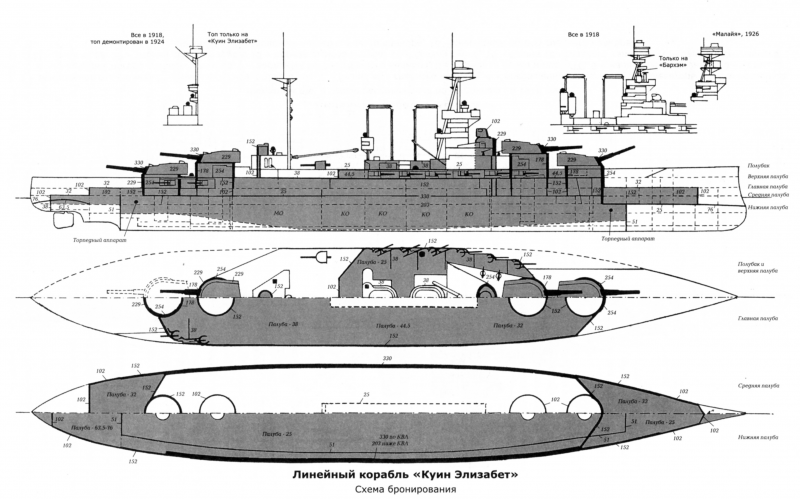
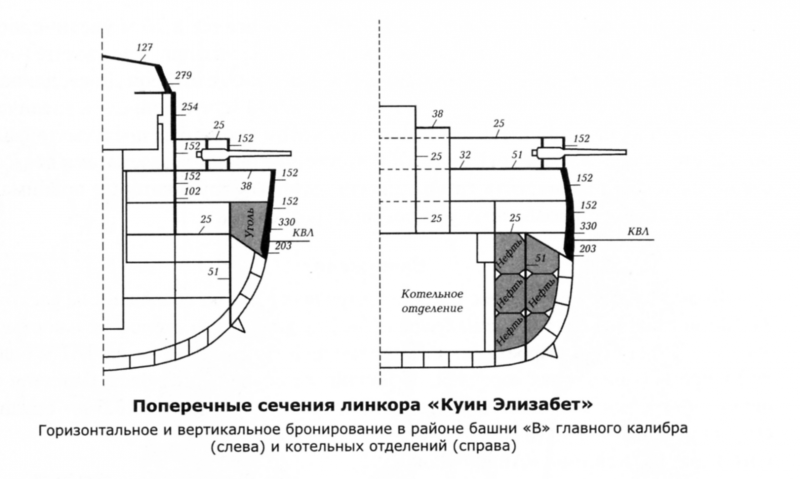
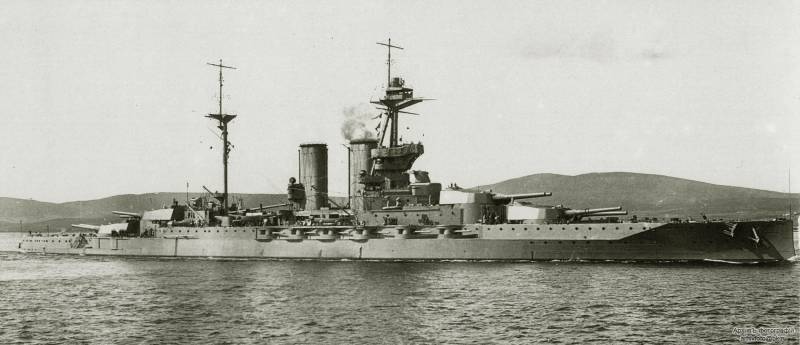
Information